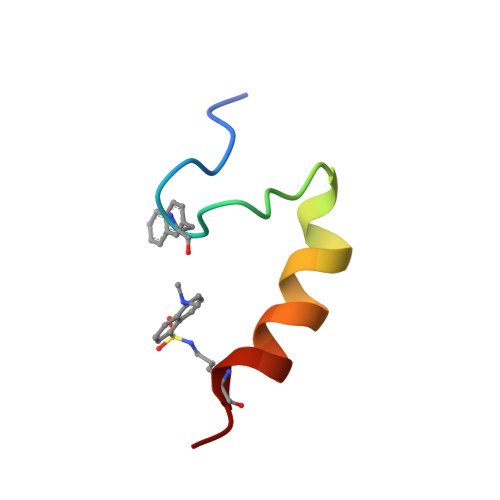A designed protein as experimental model of primordial folding
Sadqi, M., de Alba, E., Perez-Jimenez, R., Sanchez-Ruiz, J.M., Munoz, V.(2009) Proc Natl Acad Sci U S A 106: 4127-4132
- PubMed: 19240216
- DOI: https://doi.org/10.1073/pnas.0812108106
- Primary Citation of Related Structures:
2K6R - PubMed Abstract:
How do proteins accomplish folding during early evolution? Theoretically the mechanism involves the selective stabilization of the native structure against all other competing compact conformations in a process that involves cumulative changes in the amino acid sequence along geological timescales. Thus, an evolved protein folds into a single structure at physiological temperature, but the conformational competition remains latent. For natural proteins such competition should emerge only near cryogenic temperatures, which places it beyond experimental testing. Here, we introduce a designed monomeric miniprotein (FSD-1ss) that within biological temperatures (330-280 K) switches between simple fast folding and highly complex conformational dynamics in a structurally degenerate compact ensemble. Our findings demonstrate the physical basis for protein folding evolution in a designed protein, which exhibits poorly evolved or primordial folding. Furthermore, these results open the door to the experimental exploration of primitive folding and the switching between alternative protein structures that takes place in evolutionary branching points and prion diseases, as well as the benchmarking of de novo design methods.
Organizational Affiliation:
Centro de Investigaciones Biológicas, Consejo Superior de Investigaciones Científicas, Ramiro de Maeztu 9, Madrid 28040, Spain.
















